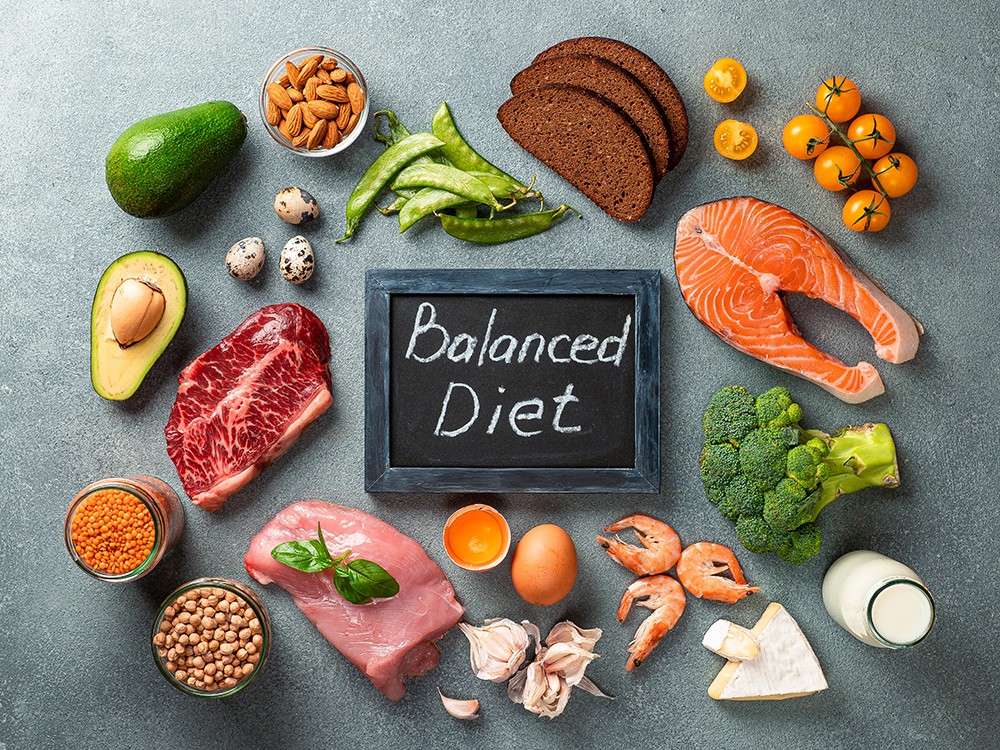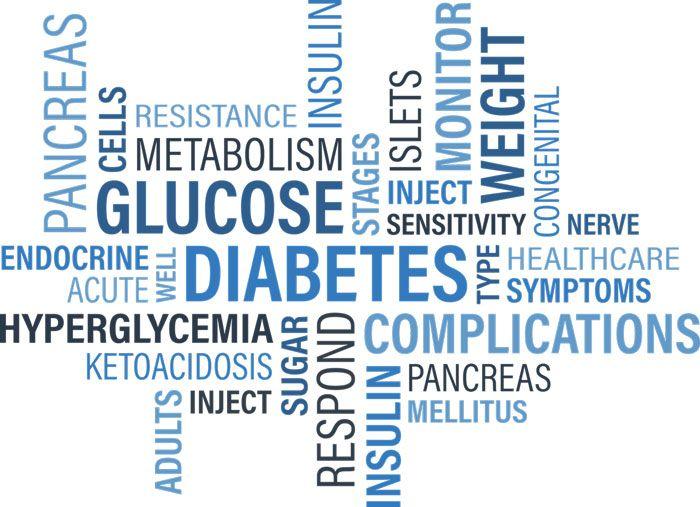Last updated on November 1st, 2023
An HbA1C blood test or A1C test measures the average blood sugar level for the past 3 months or 90 days. The American Diabetes Association (ADA) recommends using A1C tests to diagnose prediabetes, type 1 diabetes, and type 2 diabetes.
Hb (Hemoglobin) is a protein found in RBC (red blood cells), whose role is transporting oxygen to cells. HbA1c is the portion of hemoglobin that takes up sugar in the blood. The high level may be a sign of poorly controlled diabetes.
The doctor relies on A1C tests to monitor diabetes treatment plans. If your aAc11C levels are too high, this means your blood sugar is too high. Lowering blood sugar levels lowers a person’s A1C. To understand how to lower HbA1c levels, it’s important to understand what is glycated hemoglobin or A1C.

What Is Glycated Hemoglobin or HbA1c?
Glycated hemoglobin or glycosylated hemoglobin is part of hemoglobin that binds to glucose when the blood sugar level is high. Its level is a reflection of blood sugar levels throughout the lifespan of red blood cells.
Glycated hemoglobin is a biological parameter for monitoring glycemic balance in diabetic states (unstable, poorly balanced, insulin-dependent, or not).
There are certain ways to take glycated hemoglobin or A1C test. Before knowing how to reduce glycosylated hemoglobin, let’s understand some more basics.

What Is An A1C Test?

This test measures how well the body is holding blood sugar levels. It gives the average percentage of haemoglobin bound to sugar in a blood sample. When glucose gets into the blood, it binds to a protein in red blood cells called haemoglobin. Haemoglobin carries oxygen around the body:
- The higher the blood sugar, the more it binds to haemoglobin
- Red blood cells live for about four years. Months for the A1C results to reflect long-term blood sugar levels.
- In this test, the blood is taken from a finger prick or a blood sample.
- Doctors usually do more than one A1C test before making a diagnosis of diabetes.
- The first test helps a doctor determine a person’s baseline A1C for later comparison.
The frequency at which a person diagnosed with diabetes should be tested depends on the type of diabetes and management factors.
Summary
Understanding how to lower HbA1c levels starts with getting the facts right about the A1C test. A doctor or nurse will perform a blood test to determine a person’s A1C level, whether it is good or bad.
Why Should You Reduce the A1C Values?
Summary
Many studies have suggested that lowering A1C naturally can help slow the progression of diabetes and reduce the risk of complications. Like nerve damage and cardiovascular disease in type I and type II diabetes. The American Diabetes Association recommends A1C for most people below 7%.
Many people ask what causes A1C to go up. The answer is the increase in sugar in the blood of a person. A doctor will diagnose diabetes when a person’s A1C is 6.5% or more on two separate occasions. Physical activity, diet, and possibly sugar tablets can help control blood sugar levels and help lower A1C naturally.
Read More: mmol to mg/dl conversion
How To Reduce HbA1c Level Naturally?
Contrary to common belief, there are different ways to lower A1C. There are certain ways to Exercise and Style Tips To Lower A1C Levels, including:
- Engage In Physical activity: Exercising is one of the most important ways to lower A1c. Current guidelines recommend that adults use 150-300 principal minutes of moderate exercise every week. Individuals who take insulin should speak to their doctor about an appropriate pack.
- Monitor Blood Glucose: This is vital to ensure that the person is achieving their goals and making necessary changes.
- Track Progress: This is useful for self-motivation, monitoring change, and identifying the strategies that work for a person.
- Involve Others: Lifestyle change is often easier to adapt when other people can encourage and monitor progress.
Follow Nutrition tips: Monitoring of Carbohydrates can help a person control their blood sugar. General diet tips to lower A1C naturally include:
- Pay attention to the portion sizes
- Eat regularly, every 3 to 5 hours
- Eat similarly small portions with meals and snacks
- Plan meals in advance
- Keep a nutrition, medication, and exercise diary
- Spread high-carbohydrate foods throughout the day
- Ask a nutritionist for help
A doctor will advise each person differently on their dietary needs, including the amount of carbohydrates they consume. This will depend on individual factors, including their training level and treatment plan.
Avoid Sugary Foods
One of the most important ways to lower A1C is avoiding sugary foods. Foods that take a long time to suggest, like whole grains, have a slower and less impact on blood sugar levels. A person will digest simple sugars faster- found in candy and white bread . This can cause blood sugar to rise. Frequent increases in blood sugar can accelerate the development of diabetes and increase the risk of complications.So, try to cut down sugary foods to lower A1C naturally for an appropriate HbA1c reduce diet.
Read More: Normal Sugar Level in Body
Limit Carbohydrates
How to reduce HbA1c level involves cuttting off carbs. A person with diabetes needs to control their carbohydrate intake, but they do not need to cut out carbohydrates altogether. A good HbA1c-reducing diet should have very limited, planned carbohydrate.
Tips For A Healthy Carbohydrate Intake
Spread the carbohydrates ingested over the day for a good HbA1c reduce. Along with this choosing, the right carbohydrates is also an important aspect that must be considered when you have to work on lowering your A1C levels.
There are three types of carbohydrates:
- Sugar: The body absorbs them quickly, causing blood sugar levels to rise.
- Strength: They take longer to be absorbed and are less likely to cause glucose spikes
- Fiber: This is essential for health. Its benefits include reducing the risk of hyperglycemia.
Fiber is complex and takes longer to break down, providing longer-lasting energy and the risk of blood sugar spikes. Fiber helps properly maintain a healthy digestive tract. If women consume at least 25 grams (g) of fiber per day and men 38 grams or more, the risk of developing type 2 diabetes can decrease. Around 20-30% of sources of fiber include whole grains, cereals, nuts, and whole fruits and vegetables. Whole fresh fruits contain more fiber than fresh fruit juices.
Natural sugar
How to control HbA1c naturally? Well, one important way is to eliminate refined sugars. Refined sugars such as candy are quickly absorbed by the body, leading to dangerous blood sugar spikes. Consuming fresh Fruits, vegetables, and low-fat-containing dairy products contain less processed sugar, which is healthier than refined sugar. All fruits and whole vegetables contain natural sugars, but they also tend to be high in other nutrients, including fiber.
Blood sugar is the level of sugar in the blood. It varies during the day but should be around 1g / L overall for an average rate. Eating meals and physical activity will make it evolve.
Read More: How to Reduce Blood Sugar Level Immediately?
Method of Measuring Hemoglobin A1C Levels
Hemoglobin A1C levels are typically measured through a blood test. Here’s a simple explanation of how it’s done:
- Blood Test: To measure hemoglobin A1C levels, a healthcare professional will draw a small sample of your blood, usually from a vein in your arm. This is a routine and relatively painless procedure, similar to other blood tests.
- Lab Analysis: The blood sample is then sent to a laboratory for analysis. In the lab, they look for the amount of hemoglobin A1C in your blood.
- Percentage: The result is usually given as a percentage. It represents the proportion of your hemoglobin (a protein in your red blood cells) that has sugar molecules attached to it. This percentage indicates your average blood sugar levels over the past two to three months.
- Interpretation: Higher percentages of hemoglobin A1C generally indicate poorer blood sugar control, which can be a concern for people with diabetes. Your healthcare provider will discuss the results with you and use them to assess your diabetes management and make any necessary adjustments to your treatment plan.
So, in summary, hemoglobin A1C levels are measured by taking a blood sample and then analyzing it in a lab to determine the percentage of hemoglobin with sugar attached, providing insight into your average blood sugar levels over time.
What Does High or Low HbA1c Level Indicate?
High and low HbA1c levels provide valuable information about a person’s blood sugar control, especially for individuals with diabetes:
High HbA1c (Hyperglycemia): Elevated HbA1c levels (usually above 6.5% for diabetes diagnosis) indicate that a person’s average blood sugar levels have been consistently high over the past two to three months. This suggests poor blood sugar control, which can lead to various health complications over time. It may signal a need for adjustments in diabetes management, such as changes in medication, diet, or lifestyle. Uncontrolled hyperglycemia can increase the risk of heart disease, kidney damage, nerve problems, and vision issues.
Low HbA1c (Hypoglycemia): Extremely low HbA1c levels may indicate that a person is experiencing frequent episodes of low blood sugar (hypoglycemia). While this may seem beneficial at first glance, excessively low blood sugar can be dangerous and lead to symptoms like dizziness, confusion, and, in severe cases, loss of consciousness. It may suggest overly aggressive diabetes treatment and healthcare providers might need to modify medication or insulin dosages to reduce the risk of hypoglycemia.
HbA1c levels serve as a crucial indicator of long-term blood sugar control. High levels suggest a need for better management to prevent complications associated with hyperglycemia, while very low levels may necessitate adjustments to avoid the risks of hypoglycemia. Achieving a target HbA1c level is an essential goal in diabetes care to maintain good overall health.
How Fast Can HbA1c Level Lowered?
Lowering HbA1c levels can significantly improve overall health, especially for individuals with diabetes. Lower HbA1c can be achieved through natural methods or, in some cases, with the help of medications, though natural methods are preferred as they often yield better long-term results.
One can lower HbA1c within 3 months, whereas for some people, it might take years. It completely depends upon the individual and includes factors like age, immunity, technique chosen, treatment and management plans, diet, exercise, lifestyle, etc.
It’s important to note that individual results can vary, but Breathe Well-being has reported remarkable success in helping people reduce HbA1c levels in a relatively short time frame. Their diabetes reversal program focuses on holistic lifestyle changes, including diet, exercise, stress management, and mindful breathing techniques.
Many participants in the program have reported significant improvements, with some reducing their HbA1c levels from as high as 12 to a healthy 5.6 within just four months. This demonstrates the potential for substantial positive changes when individuals commit to comprehensive lifestyle modifications.
Breathe Well-being’s program emphasizes sustainable, long-term changes to manage and, in some cases, reverse diabetes. Always consult with a healthcare provider before making significant changes to your diabetes management plan and to determine the most appropriate approach for your unique needs. While success stories are encouraging, individual results may vary, and consistency in following the recommended program is key to achieving improved HbA1c levels.
When Should The Blood Sugar Level Be Lowered?
Summary
In most cases, high blood sugar is detected at the time of the blood test result.
Blood sugar should be controlled as soon as it is over 1.10 g/L on an empty stomach. Initially, we will implement food hygiene measures – food balance and physical activity – and monthly monitoring as long as the parameters are not normalized.
Also, family tendencies or the presence of risk factors enhance vigilance. It is essential to control blood sugar when there are risk factors, such as being overweight, a genetic predisposition to diabetes high cholesterol level or triglyceride levels, or a history of cardiovascular disease.
Read More: Long Term Complications of Diabetes
Foods to Lower A1C Levels
Summary
One of the main ways to lower your blood sugar is to monitor your diet without following a strict diet, that can be a source of frustration.
It’s not about removing all the sugars from the dish. It’s about significantly reducing the quick sugars (sweets, chocolate, ice cream, sugary drinks, etc.) as well as saturated fats (cheese, sausage, stews in sauce, etc.)) fried food) ;
Reduce your consumption of alcohol, whose sugar penetrates the body very quickly;
Pay attention to the time of day when you consume carbohydrates. The body metabolizes sugars and fats during the night. Therefore, it is a question of limiting these contributions to dinner as much as possible. Energy expenditure decreases markedly with age;
Certain foods to lower hemoglobin a1c, such as green tea or cinnamon, are sometimes recommended to help lower blood sugar, but the effects are not miraculous;
Preference for fiber in the diet, which helps prevent a rise in blood sugar by affecting the rate of absorption of carbohydrates;
- Prefer foods with a low glycemic index (lentils, tomatoes, apples, etc.).
Can Physical Activity Help in Lowering A1C Levels?
Summary
There is nothing better to lower blood glucose levels than to exercise regularly naturally. “From the first physical effort, the body will draw and consume carbohydrates, the fuel for the muscles.
However, twenty minutes of regular physical activity is enough to reduce A1c naturally, starting with sweating and exercising the cardiovascular system. You can then gradually increase the duration according to your physical capacities. Swimming, Nordic walking, running, cycling, aerobics—there are so many activities to favor. What is the correct frequency? The answer is two to three sessions per week.
These sessions are in addition to the WHO recommendations, which are to walk about 30 minutes each day. Everyone’s physical abilities must, of course, be respected. The important thing is to practice regular activity within the limits of your means so as not to endanger your health and to lower a1c levels quickly.
If gentle gymnastics or weight training can benefit flexibility or sheathing, however, be aware that they do not affect blood sugar. So favor cardio sessions.
Read More: Reverse your Pre Diabetes Naturally
How to lower Hba1c quickly?
Tired of your high HbA1c reports? Do you want to reduce it? Don’t worry we are here with some amazing tips that will greatly help you lessen your HbA1c:
Following a Proper Diet
Adopting lifestyle changes is the fastest way to lower your HbA1c. First, consider your diet. Avoid foods high in simple carbs and sugar, such as sweets and white products like bread, maida, etc. Start eating healthy and include foods high in lean protein and dietary fiber.
Regular Exercise and Workout
The second most important part of lifestyle adaptation is following a workout schedule on a daily basis. Doing physical acts like gyming, running, or jogging for some time helps in effective insulin usage. Along with this, building muscles lowers blood sugar, as muscles are a storehouse of glucose.
Stress Management
Stress and blood sugar have a positive relationship. As stress increases, so do the blood sugar levels. Managing your stress and following stress management techniques like meditation, yoga, etc, will help you reduce HbA1c levels.
Taking your HbA1c Medicines on Time
Along with the above lifestyle alterations, you must follow your diabetes medicines religiously. The combined effect of meds and lifestyle changes will help you reduce your high HbA1c quickly.
Keeping in Constant Touch with your Doctor
Do a constant follow-up with your doctor. The doctor will analyse your progress and change or adjust your treatment as required. They will also make a blood test checkup schedule through which you will know your progress.
Avoid Alcohol
When dealing with high HbA1c, alcohol is one of your biggest enemies. Drinking alcohol may hinder your path of reducing HbA1c therefore, avoid it.
Read More: Sliding Scale Insulin Therapy Chart For Diabetics
FAQ’s (Frequently Asked Questions):
How to reduce hba1c in a week?
There is no magic trick that can rapidly reduce HbA1c within days. Follow the below steps to reduce HbA1c levels in the fastest way:
- Following a diabetes-friendly diet plan.
- Following a regular workout schedule.
- Taking diabetes medicines on time.
- Being in constant touch with the doctor.
- Avoiding alcohol and smoking.
- Weight loss (for overweight diabetics)
- Stress management
- Doing related tests at specified intervals.
How fast does metformin lower A1C?
Using metformin can help reduce the level of A1C in the body. However, it takes at least a minimum of one week to show results. To reduce the level of A1C doctors often prescribe lower dosages of metformin to patients and increase it gradually.
How is glycated hemoglobin determined?
Glycated hemoglobin is obtained by taking a blood sample on an anticoagulant (heparin, EDTA), usually at the elbow bend. The assay can also be performed from a drop of blood obtained by pricking the fingertip.
Why prescribe a dosage of glycated hemoglobin?
Glycated hemoglobin assay is prescribed to monitor blood sugar levels in people with diabetes. This test checks the control of diabetes over the past two months. HbA1C helps visualize the average concentration of glucose in the blood over this period. With this dosage, the doctor will be able to see whether the treatment taken by the patient to control his diabetes is working or not.
Who needs this test?
Glycated hemoglobin testing is suggested for checking blood sugar restriction in people who may be pre-diabetic and controlling blood sugar control in patients with more lofty levels, termed diabetes mellitus. Diabetes being the major reason for causes of high a1c levels. Hba1c level well below 7 designates an appropriate authority on diabetes, and hence it’s suggested to take HbA1c test every three months for better monitoring.
How is HbA1c performed?
Many people ask the question how does a1c get calculated? Numerous techniques are used to estimate Haemoglobin A1c. Laboratories use high-performance liquid chromatography (the HbA1c outcome is calculated as a ratio to total hemoglobin using an enzymatic assay, immunoassay, capillary electrophoresis, or boronate affinity chromatography.
Disclaimer
This site provides educational content; however, it is not a substitute for professional medical guidance. Readers should consult their healthcare professional for personalised guidance. We work hard to provide accurate and helpful information. Your well-being is important to us, and we value your feedback. To learn more, visit our editorial policy page for details on our content guidelines and the content creation process.

 English
English














